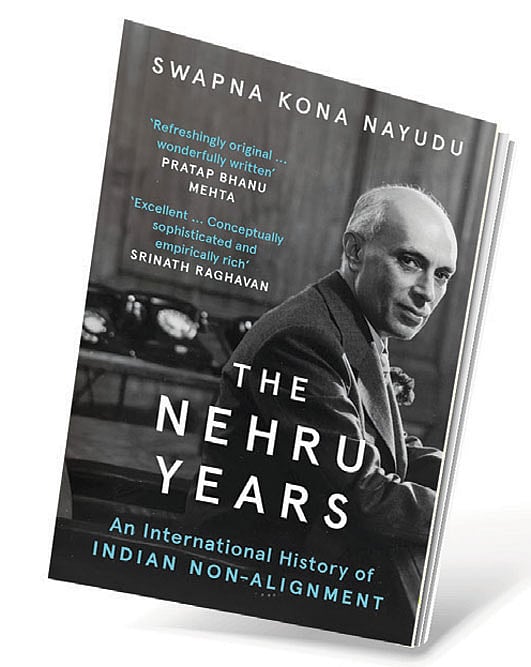Non-Aligned India

SOME YEARS AGO, an ‘archival turn’ in the study of Indian foreign policy was noted and commented upon as being something new and unusual. The archival turn referred to the digging into the historical records of the Ministry of External Affairs and other primary sources to study the making and functioning of Indian foreign policy in a granular way instead of only at a normative and discursive level.
This archival turn has since consolidated itself. Diplomatic history has established itself as a genre within the larger study of international relations and foreign policy in India. Deeply adversarial neighbourhood relations in South Asia as also India’s growing international profile, have fed a growing public interest in India’s diplomatic history further fuelling this archival turn.
In The Nehru Years, Swapna Kona Nayudu studies India’s non-alignment in the 1950s. In her narrative India is the crucible where this idea germinated and gained traction. Early in the book she thus posits, “It was the political landscape of India at the turn of the century that inaugurated non-alignment”. Her view therefore also is to “refute the view that non-alignment is an artefact of the cold war period”.
The core of the book is however focused sharply on the examination of India’s role and positions on three major international situations over the 1950s.
The Korean War (1950-53) was the platform for India to roll out its mediatory diplomacy and play a useful role by adopting a posture of equidistance between the contending parties—China and the US. The year 1956 saw two crisis situations—distant geographically but overlapping a good deal chronologically. The UK, French and Israeli intervention against Egypt in the Suez Canal formed the first of these. Here again India played a mediatory role although there was no doubt that it saw the French British attempt to turn back the decolonisation clock as a reprehensible move. Around this time Soviet military intervention in Hungary to suppress a pro-democracy movement saw India adopting a more subdued and ambiguous position. The contrast between these positions on Suez and Hungary attracted much notice then and the question of double standards has continued to be prominent thereafter in discussions on India’s nonaligned postures.
Lost: The Unstoppable Decline of Congress
05 Dec 2025 - Vol 04 | Issue 50
Serial defeats | Leadership in denial | Power struggles
Finally, India was deeply involved in the crisis in the Congo between 1960 and 1964 and its role extended to maintaining a key contribution to a UN peacekeeping force notwithstanding an emergent crisis with China which ended finally in an intense border war.
Nayudu’s treatment of these three situations is detailed and rigorous drawing on a wide range of sources and comprehensively mining the archives of the Ministry of External Affairs. These situations also enable an exploration of the changing contours of India’s non-alignment. The book convincingly brings out how the term evolved both conceptually and in practical terms in addressing the specificities of each international crisis.
Jawaharlal Nehru clearly dominates this narrative. His own experiences of nationalism, anti-colonialism plus his vision of the national development trajectory an independent India should follow underwrites much of what came to constitute its nonaligned postures. There was considerable overlap in this with Nasser in Egypt, Sukarno in Indonesia or Tito in Yugoslavia. Yet India also often consciously sought to maintain a distinctive position even from these otherwise likeminded countries largely to avoid ending up in predetermined postures with others in the nonaligned grouping—reminiscent of what is today termed strategic autonomy or multi alignment. Interesting and accessible, The Nehru Years is an important contribution to the exciting new field of India’s diplomatic history.

